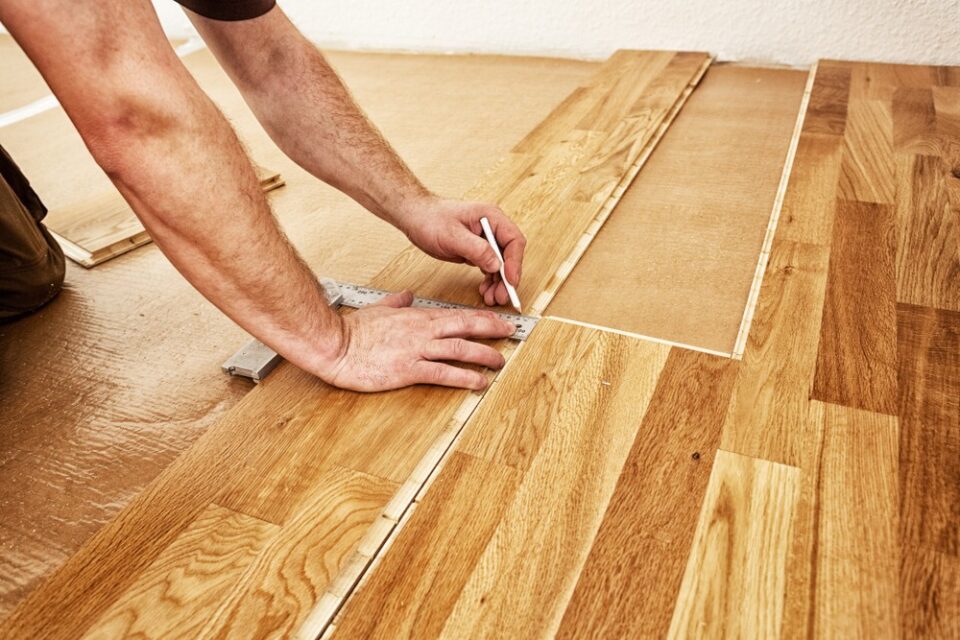Vinyl plank flooring has become a popular choice for homeowners seeking a stylish, durable, and affordable flooring solution. Its versatility, water resistance, and realistic wood-look designs make it a top choice for any room in the house, from kitchens and bathrooms to living rooms and bedrooms. This guide will explore the benefits of vinyl plank flooring, how to choose the right style, and tips for maintenance and installation.
1. What is Vinyl Plank Flooring?
Vinyl plank flooring is a type of synthetic flooring designed to mimic the look and feel of natural hardwood. It is made of multiple layers, including a protective top layer, a printed design layer, a rigid core, and a backing layer for stability. These layers create a durable, waterproof surface that’s ideal for high-traffic areas and spaces prone to moisture.
2. Benefits of Vinyl Plank Flooring
Vinyl plank flooring offers numerous advantages that make it a preferred choice for many homeowners:
- Durability: Vinyl plank flooring is resistant to scratches, dents, and stains, making it perfect for homes with pets, kids, and heavy foot traffic.
- Waterproof: Unlike hardwood, vinyl planks are 100% waterproof, making them suitable for bathrooms, kitchens, and basements.
- Easy Maintenance: Vinyl flooring is simple to clean and maintain. Regular sweeping and occasional mopping keep it looking new.
- Comfort and Quietness: Vinyl planks have a slightly cushioned feel, providing comfort underfoot and reducing noise, unlike harder surfaces like tile or wood.
- Realistic Appearance: Modern vinyl planks are designed with high-definition printing technology that closely resembles real wood, stone, or tile, offering a premium look without the premium price.
3. Types of Vinyl Plank Flooring
Understanding the different types of vinyl plank flooring can help you select the best option for your home:
- Luxury Vinyl Plank (LVP): LVP is thicker and more rigid than standard vinyl, offering a more realistic look and feel. It’s available in a wide range of designs, from traditional oak to trendy grey tones.
- Rigid Core Vinyl Plank: This type features a dense core made of wood-plastic composite (WPC) or stone-plastic composite (SPC), providing added durability and stability. It’s ideal for uneven subfloors and areas with heavy furniture.
- Waterproof Vinyl Plank (WPC & SPC): Both WPC and SPC planks are 100% waterproof, making them an excellent choice for moisture-prone areas. SPC has a stone-based core, making it even more durable and dent-resistant.
4. How to Choose the Right Vinyl Plank Flooring
When choosing vinyl plank flooring, consider these factors to find the perfect match for your space:
- Thickness and Durability: Thicker planks tend to be more durable and comfortable underfoot. Look for planks with a wear layer of at least 12 mils for moderate traffic areas and 20+ mils for high-traffic zones.
- Style and Color: Vinyl planks come in various styles, from rustic to modern. Choose a design that complements your home’s decor and desired aesthetic.
- Texture: Some vinyl planks feature embossed textures that add realism, mimicking the feel of natural wood grains.
- Installation Method: Choose between glue-down, click-lock, or peel-and-stick installation methods based on your DIY comfort level and the condition of your subfloor.
5. Installation Tips for Vinyl Plank Flooring
Installing vinyl plank flooring is often a straightforward DIY project, but following best practices ensures the best results:
- Prepare the Subfloor: Ensure the subfloor is clean, dry, and level. Remove any old flooring, debris, or bumps that could affect the installation.
- Acclimate the Planks: Let your vinyl planks acclimate to the room’s temperature for 48 hours before installation to prevent warping or gaps.
- Follow Manufacturer’s Instructions: Always refer to the manufacturer’s guidelines for specific installation methods and requirements.
- Use the Right Tools: Basic tools needed include a tape measure, utility knife, spacers, and a tapping block. Proper tools ensure smooth cuts and secure fitting.
6. Maintenance Tips to Keep Your Vinyl Plank Flooring Looking New
Keeping your vinyl plank flooring in top condition requires minimal effort:
- Sweep and Vacuum Regularly: Remove dirt, dust, and debris to prevent scratches.
- Use a Damp Mop: Clean with a damp mop and mild detergent. Avoid using abrasive cleaners or wax-based products that can damage the surface.
- Protect from Furniture Scratches: Use felt pads under furniture legs and avoid dragging heavy items across the floor.
- Avoid Excess Water: While vinyl is waterproof, excessive water can seep into seams. Wipe up spills immediately to maintain the floor’s integrity.
Conclusion
Vinyl plank flooring is an excellent choice for homeowners looking for a durable, stylish, and cost-effective flooring solution. Its ability to mimic natural wood, combined with easy maintenance and water resistance, makes it perfect for any room in the house. By understanding the types of vinyl planks and choosing the right style, you can enhance your home’s look and enjoy a floor that stands the test of time.

